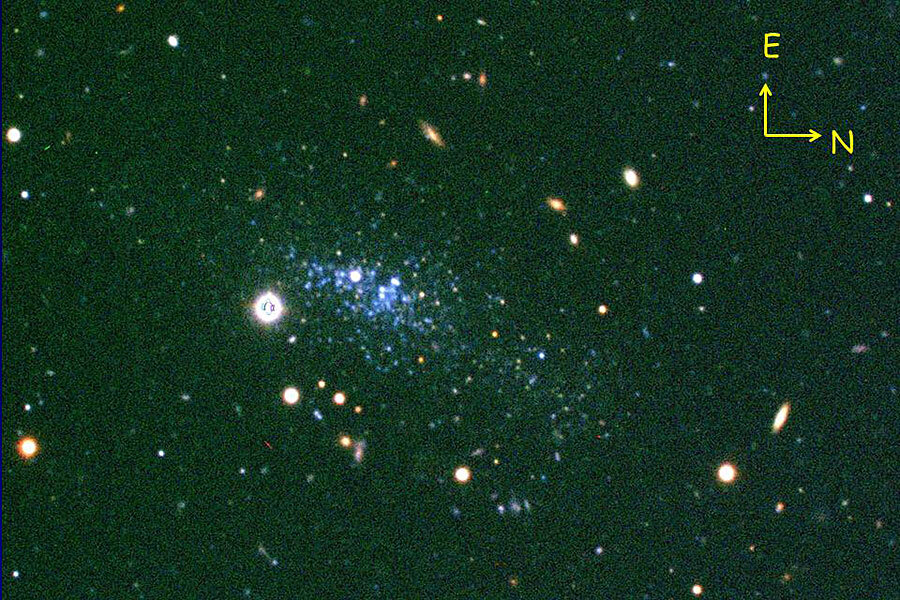Leo P: Why this little galaxy is a big starmaker
Loading...
A small galaxy some 5.3 million light years from Earth has a message for its neighbors: back off.
The Milky Way is so large it dwarfs almost all nearby galaxies. Being a smaller neighbor to a galaxy such as ours is dangerous – the Milky Way's gravity pulls gas from whatever is orbiting, diminishing that galaxy's star-making power over time. That fate has befallen nearly every small galaxy orbiting the Milky Way.
But a smaller galaxy can still flourish, as long as it keeps its distance. That's the conclusion of a new study from astronomers who used the Hubble Space Telescope to study Leo P, a small not-quite-neighbor to our Milky Way, publishing their findings recently in The Astrophysical Journal. Discovered in 2013, the dwarf galaxy lies relatively distant from the two largest galaxies in our so-called Local Group: the Milky Way and its big sister, Andromeda.
Leo P contains just about a hundred-thousandths as many stars as the Milky Way, and yet it is still churning out more. That's because it has lots of gas to fuel its star-making endeavors. So much, actually, Leo P's gas weighs more than its stars. The tiny galaxy has a promising future as long as it heeds the rule, as Scientific American put it, to not "let any behemoths siphon off your gas."
While this conclusion bodes well for Leo P – the "P" stands for "pristine" – the Arecibo Observatory in Puerto Rico, which first discovered the galaxy, has a much less certain fate. The 50-year-old radio telescope, which holds the distinction of being the largest single-dish radio instrument in the world, has flagging support from its primary benefactor: the US National Science Foundation (NSF).
According to Nature, a "streak of discoveries could be near its end" due to lack of funding. Arecibo has had a distinguished career: it found that the length of a day on Mercury is more like two Earth months than three in 1965. Arecibo discovered the first binary pulsar in 1974, a breakthrough that brought the 1993 Nobel Prize in Physics to those researchers. The observatory’s telescope also confirmed discovery of extrasolar planets in the early 1990s, the science journal reports.
The $12 million annual operating budget for Arecibo is under threat, with the NSF putting it on its list of potential cuts to its astronomy budget.
NSF has been hesitant to cut Arecibo because of its number of contributions to the scientific community, and has been seeking a new entity to help fund the observatory’s operation or possibly take over the facility entirely, Nature reports.
In July, a lead appeared in the form of alien hunters.
The Breakthrough Listen project, a $100-million effort sponsored by Silicon Valley billionaire Yuri Milner to listen to the nearest 1 million stars for signals - the largest search for intelligent life (SETI) on Earth – is a potential employer of Arecibo.
But NSF pushed back on a plan that would involve Mr. Milner's money. In late October, the science agency issued an open letter soliciting “strategies and goals for continued operations that involve a substantially reduced funding commitment from NSF.”
For Arebico, a new search is on.






